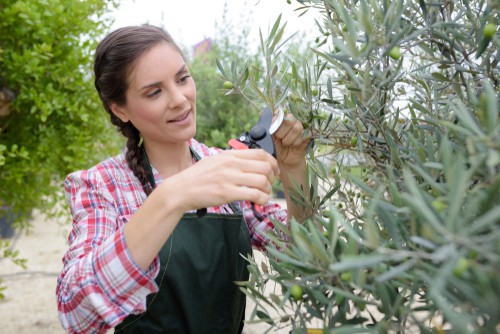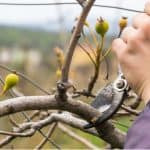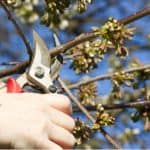Last updated on April 7th, 2022
Our site is reader supported, this means we may earn a small commission from Amazon and other affiliates when you buy through links on our site.
If you have an olive tree at home, don’t get overwhelmed at the prospect of pruning. Pruning a large tree is not as difficult as it seems, and in so doing you can help your tree maintain optimum health and aesthetic appeal.
Olive trees are pretty slow growers compared to other trees, so if you have a young olive tree, the level of pruning required is next to none. During the early years, you want the foliage to form so that the tree becomes healthy and sturdy. At this stage, the only contact you will have is to prune the framework so that it maintains a good shape.
Now, if you have an olive tree in a container, you will need to start pruning it a lot earlier than you would for a tree grown in the ground.
Olive trees will flower and fruit on wood that is one year old, and fruit isn’t produced on any shaded branches. To that end, if you want a successful harvest from your tree you will need to prune it in such a way to keep that one-year-old wood growing each year, then remove it once it is older than this, ensuring the framework allows all the branches to be in the sun.

When should you prune?
You should prune your olive tree at the end of spring or the beginning of summer. Your goal is to get to the tree before it has flowered and when the weather is still mild. As olive trees are evergreen, the new growth comes from the pruned cuts, however, the fresh shoots are also susceptible to diseases or cold weather, meaning if you make the cuts at the appropriate time of year, you mitigate this risk.
How to prune olive trees
It is best to start with a set of sharpened, sanitised loppers at the base of your tree. Remove any suckers here that are fighting with the main tree for nutrients and resources.
After that, you want to focus on the branches that are too dense and prevent the light from reaching the middle of the tree. You might want to stand in front of your olive tree trunk and look through the canopy to find the areas where sunlight is not hitting. Start with the dead or diseased wood, then tackle any parts that are detracting from the shape.
Again, if you are growing in a pot or container, you need to control the height of your tree by cutting the tallest branches back.
Tips!
- Throughout the summer you can keep an eye on your olive tree for suckers and remove them as necessary.
- After harvesting, if you notice any damaged or diseased wood, you can remove it in the autumn.
- If you have an older olive tree, one that is struggling to maintain its productivity, you can conduct more drastic pruning where you open the centre up by removing the central branches so that more sunlight penetrates the middle. Most olive trees are quite robust and won’t need this, it is an advanced technique to keep in mind for older olive trees.


